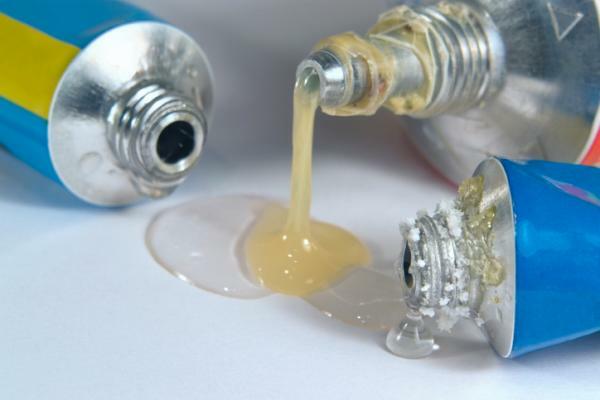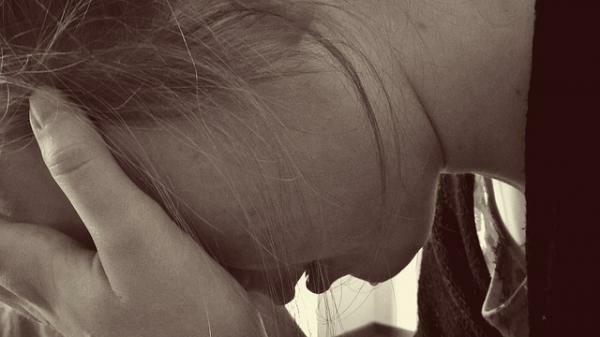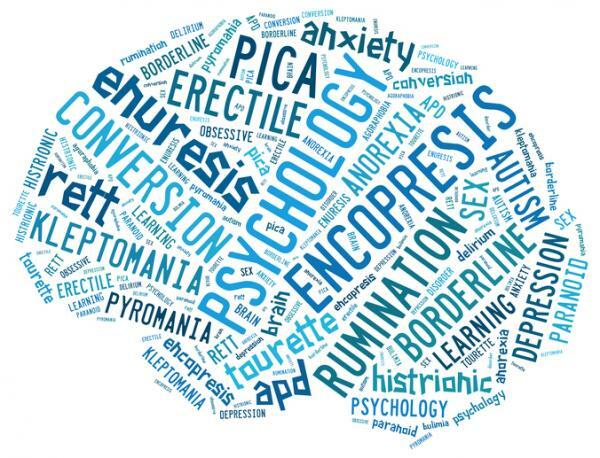
Tourette syndrome is a neurological disorder in which the person suffering from it presents a series of motor and vocal tics, which are involuntary, continuous and repetitive movements. It is a disorder that usually occurs together with other types of psychological problems, such as ADHD, OCD, anxiety or depression.
In the following Psychology-Online article, we will explain in detail what is the diagnosis and treatment of Tourette syndrome.
Index
- Tourette syndrome: psychological symptoms
- Tics in Tourette syndrome
- Comorbidity
- Tourette syndrome diagnosis
- Criteria for the diagnosis of Gilles de la Tourette's disorder
- Differential diagnosis of Tourette syndrome
- Tourette syndrome prognosis
- Tourette syndrome treatment
Tourette syndrome: psychological symptoms.
Among the psychological aspects to take into account are:
The anguish
This is a Conduct disorder, following a dramatic existential situation. Anxiety is produced by a traumatizing event that engulfs the individual, who, unable to cope with it, reacts, depending on his temperament, with screams or sobs, weariness or suicide.
Every painful life situation can be felt as particularly frustrating ("as frustrating as trying to stop the Tics and not being able to do it ") and cause behavioral abnormalities, neuroses such as hysteria or phobia and also psychosomatic disorders such as asthma, ulcers gastric, etc.), if the current traumatic event comes to realize psychological virtualities inscribed in the personal history of the individual. Although the individual tries to stop the Tics, they suppress it temporarily, but these are out of voluntary control; The individual experiences an increase in internal tension that is only relieved when a new tic is executed.
This action leads the individual to a clear frustration of trying and not being able to stop those tics, leading to anguish and eventually leading to a clear conduct disorder.
As data they have been described behavioral prodromal symptoms such as: irritability, difficulties in attention and poor tolerance to frustration, which appear before or coincide with the appearance of tics.
They have also been described frequent bouts of angerThey have called it "episodic anger", which occurs in 30% of patients. Children with Tourette's disorder swear, insult others, or make obscene gestures and movements. These children or adults find it impossible to control these sounds and movements, some are in environment where these behaviors are misunderstood as in school and at home, and are strongly repressed with punishments.
The punishment of the parents, the teasing of the friends and the scolding of the teachers do not help the child to control the tics, in some cases these children will seek isolation to unleash their symptoms, and end the anguish caused by trying to repress their Tics, since otherwise This ease of scolding these children for their peculiar behavior would imply hurting their self-esteem or self-esteem, in some cases it is inevitable that this happen.
Therefore, we could say that one of the characteristics or one of the almost inevitable consequences of this disorder is the self-isolation of the child. This long-winded isolation will translate into a severe neuropsychiatric disorder in the future, what it is like: depression, panic attacks, mood swings, and behaviors antisocial.
Suicides have been described, given the despair caused by the destructive effect of the disease on social and work life.
In addition, due to its neurological nature, Tourette Syndrome probably has a large and long-lasting impact on your personality also, a different way of perceiving the world, such as suffering from albinism or arthritis.
Also, if one does not understand the tournetic aspects of his personality, I believe that one may be more prone to dilemmas of a more "existential" than "medical" nature.
Other of the neuropsychiatric problems that these children face are:
- Learning problems.
- Attention deficit disorders. (ADD)
- Obsessive-compulsive disorders.
- And the frequent problems that significantly interfere with academic achievement and social adjustment.
That is why these patients especially students must be placed in a school environment that meets individual needs. Students with (ST) may require tutoring, special or smaller classes, and in some cases special schools.
All TS students need a tolerant and compassionate environment that encourages them to work to their fullest potential while being flexible enough to accommodate their special needs. This environment can include:
- Private study areas.
- Testing outside of the regular class.
- Oral tests when the child's symptoms interfere with his ability to write.
- Tests administered without time pressure reduce stress for students with TS.

Tics in Tourette syndrome.
Tourette Syndrome refers to a "impulsive disorder" or a "disinhibitory disorder". One can therefore say that, on the one hand, TS means being constantly invaded by multiple strange impulses and, on the other, being unable or less skillful to suppress them. Many researchers believe that they are totally coincidental and meaningless "the nerve jerks", while many people those who really suffer from TS, report that there seems to be some hidden pattern or meaning, which they cannot understand they.
One way to verify whether an action is a tick or not is to apply the test of "try to suppress it". If you suppress it and lead to agitation, you eventually do the act or other similar action, or a feeling of "why should I suppress it right now - I want to do it anyway," most likely a tic.
Premonitions and knowledge of sudden tics
Some Tourists report that they are aware of the tic impulse before performing it. In that case, the impulse can be expressed as a fleeting memory that you have this tic and want to do it, a sudden idea or image of frustration that you seem to want to express in the tic, or as the idea that the tics increase in you as a sneeze.
Some people with (TS) are aware that tic is a set of unpleasant physical and emotional sensations, which seek to go out "into the world" and fall into the existential dilemmas where they think, on the one hand, that they have a weakness, or a disturbed personality, or they fall into the thought that they have a condition neurological unruly, and well, they are even sicker because they cannot control this "disturbing" desire to deliberately pretend that one has impulses uncontrollable.
These tics seem to have no purpose unlike normal urges such as "scratching an itch" or coughing, these do have a purpose, the tics outwardly do not seem to have none. For example, the difference between swearing naturally and coprolalia is that a patient with (TS) a often does not even get angry or agitated at all when he insults and often this action emerges totally out of a context.
To summarize: in normal actions, "you decide to do something, like get up and go out." After the decision and only if you want to make it, "you really execute it."
With tics it is almost the opposite: no premeditation (think) about doing them and only if "you decide to suppress the tic (and are able to do it)", "you end up not experiencing the action - for some time". To imagine how the tics work: one can imagine that you are aware of the stimulus of sneezing without any physical sensation in your nose before doing so. One can replace the "sneeze" with any other sudden action and thus one can imagine how a Tics will act.
Another example is imagining the action of closing your eyes because a fly is flying directly towards them, but without there actually being any fly. Now you can imagine that when you resist the urge to close your eyes, the "imaginary" fly freezes in front of your eyes to always, desperately searching between them until eventually you have to close your eyes or shake her away from his face.
Perhaps a positive aspect of this syndrome is that apparently the neurological hyperactivity in the Syndrome of Tourette not only emerge as tics and compulsions, but also as ideas, creative sparks, impulses and their analogs.
"... their mental state is normal and most of them are very intelligent and it is important to clarify that this disease does not produce any negative effect on people's mental faculties... "- Dr. Georges Gilles de la Tourette.
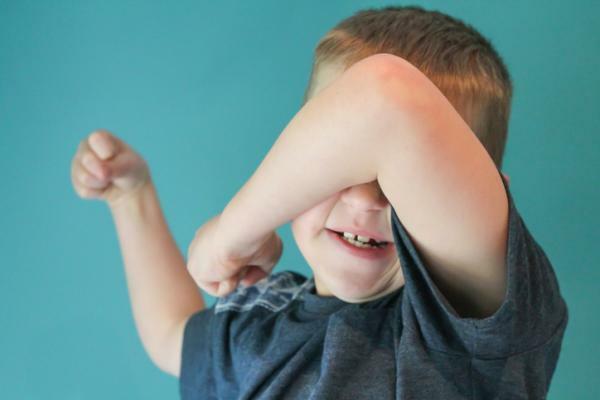
Comorbidity
Comorbidity of a disease is called the coexistence of two or more medical pathologies or unrelated pathological processes. We could call comorbidity additional processes or problems.
The frequent coexistence of Gilles de Tourette's disorder with Obsessive Compulsive Disorder (OCD), with the Attention Deficit / Hyperactivity Disorder (ADHD) and with the learning disorders. Although the results of the studies are contradictory, it has also been suggested that it coexists with the depressive and anxiety disorders.
As data we can mention:
- Obsessive-compulsive symptoms, have been found in 60% of patients with Gilles de la Tourette's disorder, and in 7 to 10% the diagnosis of obsessive compulsive disorder (OCD) can be made. Obsessive symptoms become clinically evident 5 to 10 years after the onset of simple tics, when the clinical manifestations of OCD have been compared Among patients who have tics with patients who do not have, it has been found that patients with tics have an OCD with the following peculiarities: appearance more early; more likely to have compulsions to touch, hit, fix, check, rub and close the eyes, and less to clean,; and above all with a lower therapeutic response to specific serotonin receptor inhibitors.
- The characteristics of compulsions that typically occur in tic patients, have led some researchers to believe that they are not actually compulsions but tics simple or complex to which the patient subsequently gave meaning and obsessions could be constructed or invented to explain compulsions
- In addition to the frequent comorbidity of Gilles de la Tourette's disorder with TOC, It is known that 79% of patients have at least one family member with tics or OCD, and conversely, the rate of tics in first-degree relatives of patients with OCD is high. This has suggested a genetic relationship between these disorders. In the Yale family study, it was found that male relatives of patients with Gilles' disorder de la Tourette suffered from chronic tic disorders or Tourette and instead the women suffered from OCD without tics. As not all patients with OCD have tics, it appears that OCD accompanied by tics is etiologically different from OCD without tics.
- The Obsessions consisting of unwanted repetitions of annoying thoughts, and Compulsions and Behavior Ritualist, whereby people feel that they must do something over and over again or do it in a certain shape. Examples include touching an object with one hand after touching it with the other, just to "balance things out" or repeatedly checking to see if the kitchen fire is out. Children sometimes beg their parents to repeat a phrase many times until it "sounds good."
Other disorders such as:
- Developmental Learning Disorders, which should include: reading difficulties, that is, the ability to read (dyslexia), writing, arithmetic, and preceptual problems.
- Impulse control problems, in which they can result in very aggressive behaviors or socially inappropriate events.
- Sleeping disorders, which include frequently waking up or talking in dreams, and sleepwalking.
- Attention Deficit Disorder, with or without Hyperactivity (ADD or ADHD), is one of the most common companions of (TS) - as many as 50% of tournetics have some of it. In previous years people spoke of "hyperactive children." What is less known is that these children can grow up to be ADD adults. Early in life many people with ADD experience problems in school and it is for this reason that their parents often seek help. The norm seems to be that most tournetics who are diagnosed in childhood or adolescence suffer from "Tourette Syndrome with ADD." Children often show signs of hyperactivity before (TS) symptoms appear. Symptoms of hyperactivity and ADD may include: difficulty concentrating; not finishing what you started; pretend not to be heard; be easily distractible; act often without thinking; constantly changing from one activity to another, needing a lot of attention, and general restlessness. Adults may have residual signs of ADHD such as impulsive behavior and difficulty concentrating, and the need to constantly move. ADD without hyperactivity includes all of the symptoms mentioned above - high activity level. As children with ADHD grow older, the need to move is expressed by fussiness and restless behavior. Difficulties with concentration and poor impulse control persist.
- Obsessive-Compulsive Disorder (OCD) Among the most common symptoms of (TS) are, as mentioned above, the obsessions and obligations (compulsions), which are classified as Obsessive-Compulsive Disorder (OCD). One might view the second as highly complex tics.
- The obsessions are: Recurring (repeating) ideas or thoughts that seem to invade and take over your mind, without your consent. The volume of obsessions can vary. Examples of these are: obsessions about violence and repeatedly imagines violent scenes obsessions about it to the numbers and quantifies all (count) obsessions about words and spelling obsessively has to ask everything
The obligations (compulsions) They are: repetitive actions, dispositions that one feels compelled to make, often in a ritualistic way. Often these acts go to term despite the fact that you don't really want to do them, and despite wanting to resist them. Examples of these are:
- having to do little things right now
- always align all books perpendicular to the table
- have to leave the same way you came in
- check and recheck "check" something
Whims, Episodes and Singular Feelings: Many Tournetics report that they are prone to whims such as discouragement, and singular feelings such as "that the world is just a movie "or" that there is something terribly important in the specific outline of your pencil sharpener desk".
The main characteristic of all this seems to be that they suddenly appear and disappear "unexpectedly" in the same way. Also, in a rationally crafty way, these deceptions don't always help - a deeper part of the mind seems to have found sustenance in them. They just show up again without notice.

Tourette syndrome diagnosis.
Diagnosis is made by means of clinical observation of symptoms and for the evaluation of the beginning of the same. There is no specific laboratory test for diagnosis. Many patients with Gilles de la Tourette disorder have nonspecific abnormal EEG findings. Computerized axial tomography and magnetic resonance imaging of the brain did not reveal specific structural lesions.
However, a doctor may request a "EEG," a scan, or a "cranial resonance", or some kind of blood test in order to rule out other types of diseases that could be confused with TS.
Neuroimaging studies, such as magnetic resonance imaging (MRI), computed tomography (CT), and EEG scans, or different blood tests to exclude other conditions that can be confused with ST
Criteria for the diagnosis of Gilles de la Tourette's disorder.
Gilles de la Tourette's disorder is characterized by multiple motor tics and one or more vocal tics
According to DSM-IV, the Diagnostic criteria for Gilles de la Tourette disorder are as follows:
- At some point throughout the disease there have been multiple motor tics and one or more vocal tics, although not necessarily simultaneously.
- Tics appear several times a day (usually in waves) almost daily or intermittently over a period of more than a year.
- During this time there is never a tic-free period longer than more than three consecutive months. The disorder causes significant discomfort or significant impairment in social, occupational, or other important areas of the individual's life.
- The beginning is before 18 years of age.
- The alteration is not due to the direct physiological effects of a drug (eg. Eg, stimulant) or a general medical condition (eg. Eg Huntington's disease or post-viral encephalitis).
Criteria for the diagnosis of chronic motor or vocal tic disorder
- At some point throughout the disease there have been single or multiple vocal or motor tics (this is, sudden, rapid, recurring, non-rhythmic or stereotyped vocalizations or movements), but not both of them.
- Tics appear several times a day almost every day or intermittently over a period of more than 1 year, and during this time there is never a tic-free period longer than 3 months in a row.
- The alteration causes a notable discomfort or significant deterioration social, work or other important areas of the individual's activity.
- Onset is prior to 18 years of age.
- The disorder is not due to the direct physiological effects of a substance (eg. Eg, stimulants) or a general medical condition (eg. Eg Huntington's disease or postviral encephalitis).
Criteria for the diagnosis of Transient Tic Disorder
- Simple or multiple motor and / or vocal tics (that is, sudden, rapid, recurrent, non-rhythmic, and stereotyped vocalizations or movements).
- Tics appear several times a day, almost every day for at least 4 weeks, but no more than 12 consecutive months.
- The alteration causes a notable discomfort or a significant deterioration social, work or other important areas of the individual's activity.
- Onset is prior to 18 years of age.
- The alteration is not due to the direct physiological effects of a substance (eg. Eg, stimulants) or a general medical condition (eg. Eg Huntington's disease or postviral encephalitis).

Differential diagnosis of Tourette syndrome.
Differential diagnosis should be made with other abnormal movements (for example: dystonias, dyskinesias, choreas, athetosis, myoclonus and hemibalism) and neurological diseases in which these movements are characteristic, What Huntington's chorea, Sydenham's chorea, Parkinson's disease, and Wilson's disease. They must also be distinguished from compulsions, mannerisms, and stereotyped movements. It differs from stereotyped movements because of their voluntary nature and because they do not cause subjective discomfort like tics.
Many patients with Gilles de la Tourette syndrome have abnormal but nonspecific EEG findings. The brain scan and MRI did not reveal specific structural lesions.
"If tests are requested, it is only to make a differential diagnosis, and rule out other neurological alterations, such as myoclonus or choreic syndrome. Differential diagnosis should be made with other abnormal movements (for example: dystonias, dyskinesias, choreas, athetosis, myoclonus, and hemibalism) and neurological diseases in which these movements are characteristic, such as Huntington's chorea, Sydenham's chorea, Parkinson's disease, and Wilson's disease. They must also be distinguished from compulsions, mannerisms, and stereotyped movements. It differs from stereotyped movements because of their voluntary nature and because they do not cause subjective discomfort like tics2.
Tourette syndrome prognosis.
There is no cure for Gilles de la Tourette Syndrome. However, the condition in many patients improves as they mature. Individuals with (TS) can expect a long of normal life. Although the disorder is chronic and lasts for a lifetime, it is not a degenerative disease. The (ST) does not impair intelligence. Tics tend to decrease as the patient ages, allowing some patients to discontinue the use of medications. In some cases, a complete remission occurs after adolescence.
When making a prognosis of the disease there are studies in which the different types of scales are compared evaluation of severity of tics, these have been shown to be better than those that combine history and observation direct. And when comparing the scales that combine history and direct observation, they have all been shown to be equally effective. Work is being done to develop a scale to unify and minimize the errors of the others. Also, scales have been designed to measure the degree of interference from social activity.
The two most widely used scales They are:
- The Global Assessment Scale (GAS).
- The Children's Global Assessment Scale (CGAS).
To obtain a more objective and measurable description of the severity of the tics, video recordings are made. Tics are usually counted in intervals of 2 to 16 minutes. Video measurements performed under controlled conditions can provide highly reliable results. They have also been used to document changes in treatment studies. To increase the validity of the measurement, the patient should not know that he is being examined.
So the scales that combine history and direct observation are the most widely used and address various dimensions. of tics, including number, anatomical distribution, complexity, intensity, frequency, suppression, interference, and social impairment. Each dimension is applied separately for motor and vocal tics. The number refers to the variety of discrete tics or sounds.
So, summarizing with respect to forecast we must be optimistic and to say that many people experience a complete remission or marked improvement in their late teens or early twenties. Most people with TS get better, not worse, as they mature, and can anticipate that they will lead a normal life. About a third of patients experience a marked decrease in tics in adulthood.
Tourette syndrome treatment.
As noted in the preceding section, tic disorder and Tourette's Syndrome have multiple treatments, from different fields of science ranging from Medicine with treatment with psychotropic drugs, to Psychology, within which the behavioral approach has developed different interventions.
The treatment of this syndrome is approached in a multidisciplinary way. Because it is a complex disorder, it requires a integral approach, from medicine, pharmacology, and from information to the family, teachers and colleagues of the patient, about her situation. Although today there are medications to combat the problem, it has been seen that the relief they produce is transitory and that they have side effects.
Therefore, especially in the case of children, a behavioral therapy. Sometimes it is enough just for the neurologist to talk with the parents, explaining what the disorder, what is the prognosis and how to manage the environment so that it does not leave psychological consequences and behavioral
But the most important thing is to discover in both adults and children if other disorders are present, such as obsessive compulsive syndrome, that usually accompany the problem. Treating them properly, apart from improving the lives of these patients, generally reduces stress and, in this way, the frequency with which the tics recur.
Due to the fact that the symptoms do not limit the majority of patients and their development proceeds normally, most people with TS do not require medication. However, medications are available to help patients when symptoms interfere with daily tasks.
In other words, there is only medication available to help control symptoms when they interfere with your functions. Unfortunately, there is no single medicine that is useful for everyone with TS. Also, there is no one drug that eliminates all symptoms, and all drugs have side effects.
In addition, medications available for TS they can only reduce specific symptoms. Some patients who need medications to reduce the frequency and intensity of the tics may be treated with neuroleptic drugs such as haloperidol (haldol or Halopidol), clonidine (capapres), and pimozide (primozide or orap).
These drugs are usually given in very small doses which are slowly increased until the best possible balance between symptoms and side effects is achieved.
In the case of tardive dyskinesia. it usually goes away when the drug is discontinued. Short-term side effects of haloperidol and pimozide include muscle stiffness, drooling, tremors, lack of facial expression, slow movement, and restlessness. These side effects can be reduced by drugs commonly used to treat Parkinson's disease. Clonidine, an antihypertensive drug, is also used to treat tics. Research shows that this drug is more effective in reducing motor tics than phonic tics. Common side effects associated with the use of clonidine are fatigue, dry mouth, irritability, dizziness, headaches, and insomnia.
Flufenacin (Prolixin, Permitil) and clonazepam (Klonopin) may be prescribed to help control the symptoms of tics, some neutralize dopamine activity and can cause a marked decrease in tics, compulsions, and the like. Medications are also available to treat some of the conduct disorders associated with TS. Stimulants such as methylphenylate, pemoline and dextroamphetamine, although their use is controversial because they have been reported to increase tics.
For obsessive-compulsive behaviors that significantly interfere with daily functioning, fluoxetine (Prozac), clomipramine (anafranil), sertraline, and Paroxetine Some of the side effects, including depression and cognitive disorders, may be relieved by reducing the dose or replacing the drug. medicine.
The child may be threatened, excluded from family activities, and prevented from enjoying a normal personal relationship. These difficulties can become more serious during adolescence, a special test for young people and even more so for a person suffering from a neurological disorder.
To avoid psychological damage, early diagnosis and treatment are crucial. Furthermore, in severe cases, symptoms can be controlled with medication.
It is always recommended psychotherapy, as this can help the person or the family to manage not only the disorder but also the social and emotional problems that sometimes occur. Some behavior therapies can teach you to substitute a tic for another that is more acceptable.
Other techniques such as relaxation or relaxation and biofeedback They can be helpful in relieving stress that can lead to increased tic symptoms.
With respect to support groups These allow families to exchange their ideas and feelings regarding their common problems.
Often, family therapy help, parents of children with TS have to think and understand the difference between understanding and overprotection. They are constantly deciding if some behaviors are due to a manifestation of the TS or simply an imitation. Parents must then determine what the best answer is. Children should be encouraged to control socially unacceptable behaviors where they can, and try to replace them with socially acceptable behaviors or tics. Parents are encouraged to give their children with TS the opportunity to achieve as much independence as possible, and while both gently but firmly, limiting the attempts of some children to use their symptoms to control those who surround.
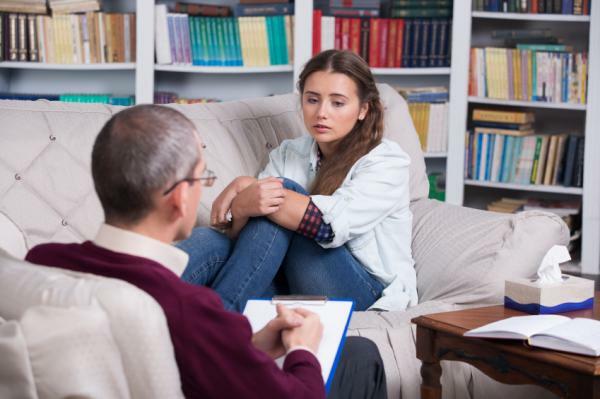
This article is merely informative, in Psychology-Online we do not have the power to make a diagnosis or recommend a treatment. We invite you to go to a psychologist to treat your particular case.
If you want to read more articles similar to Gilles de la Tourette syndrome: diagnosis and treatment, we recommend that you enter our category of Clinical psychology.
